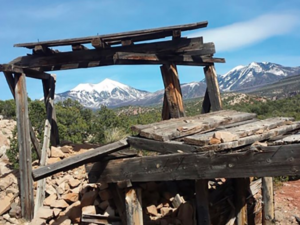“When uranium mining occurred in white communities, the waste it produced was removed from the proximity of the residents. This level of clean-up did not take place when uranium mining occurred close to low-income communities of color”
By: | snakeriveralliance.org April 10, 2021
Those living near Nuclear Power Plants (NPP’s) face extreme health risks. Blood, thyroid, breast, and other forms of cancer have the potential to form due to the various types of radioactive emissions that escape the NPP’s through the air, water, and soil.
The World Nuclear Association and The Nuclear Regulatory Commission (NRC) claim that exposure to low-level radiation is undetectable and not unsafe, yet countless studies confirm the danger of the radiation that occurs during normal operation at an NPP. According to Dean Kyne and Bob Bolin, Children are especially vulnerable to this exposure.
Toxic incinerators, uranium mines, atomic reactors, and other nuclear dumping sites are generally located on cheap land where there are limited resources and little organized opposition (Jantz, p. 249). Unfortunately, because of this, they are often located in Black, Indigenous, and low-income communities that suffer the devastating consequences of improperly handled nuclear waste and pollution.
These communities are susceptible to “economic blackmail”: a promise of jobs and economic development, and are taken advantage of by powerful companies (Adebagbo).
The Uranium boom occurred during the 1950s – 1980s in New Mexico, Arizona, Colorado, and Utah. 80%-90% of uranium extraction happened on or nearby indigenous lands, and the residents were given the most dangerous jobs: underground mining, and ore hauling (Jantz, p.251). In New Mexico, Navajos were most likely to be exposed to uranium ore and its decay products because the white residents were given priority. Navajos were also paid less than white employees doing the same job (Jantz, p.253).

1 to 4 pounds of milled uranium results in a ton of waste. This waste is then put into unlined pits, allowing it to seep into groundwater and surface water (Jantz, p. 252). Uranium extraction and the waste produced are linked with lung cancer, hypertension, heart disease, and kidney disease.
When uranium mining occurred in white communities, the waste it produced was removed from the proximity of the residents. This level of clean-up did not take place when uranium mining occurred close to low-income communities of color (Jantz, p. 249).
Low-Income communities and communities of color deserve better when it comes to their exposure to hazardous waste.
For more info, I have included my sources below.
Works Cited
Adebagbo, Oluwaseun. Environmental Injustice: Racism Behind Nuclear Energy, 26 Mar. 2018, large.stanford.edu/courses/2018/ph241/adebagbo1/.
“Environmental Justice for the Navajo: Uranium Mining in the Southwest.” Navajo Justice Page, umich.edu/~snre492/sdancy.html.
Environmental Justice · NIRS. 19 July 2019, www.nirs.org/environmental-justice/.
Environmental Justice. www.beyondnuclear.org/environmental-justice/.
Eric Jantz, Environmental Racism with a Faint Green Glow, 58 Nat. Resources J. 247 (2017). Available at: https://digitalrepository.unm.edu/nrj/vol58/iss2/12
Kyne, Dean, and Bob Bolin. “Emerging Environmental Justice Issues in Nuclear Power and Radioactive Contamination.” International Journal of Environmental Research and Public Health, MDPI, 12 July 2016, www.ncbi.nlm.nih.gov/pmc/articles/PMC4962241/#:~:text=In%20case%20of%20acute%20failures,in%20both%20Chernobyl%20and%20Fukushima
